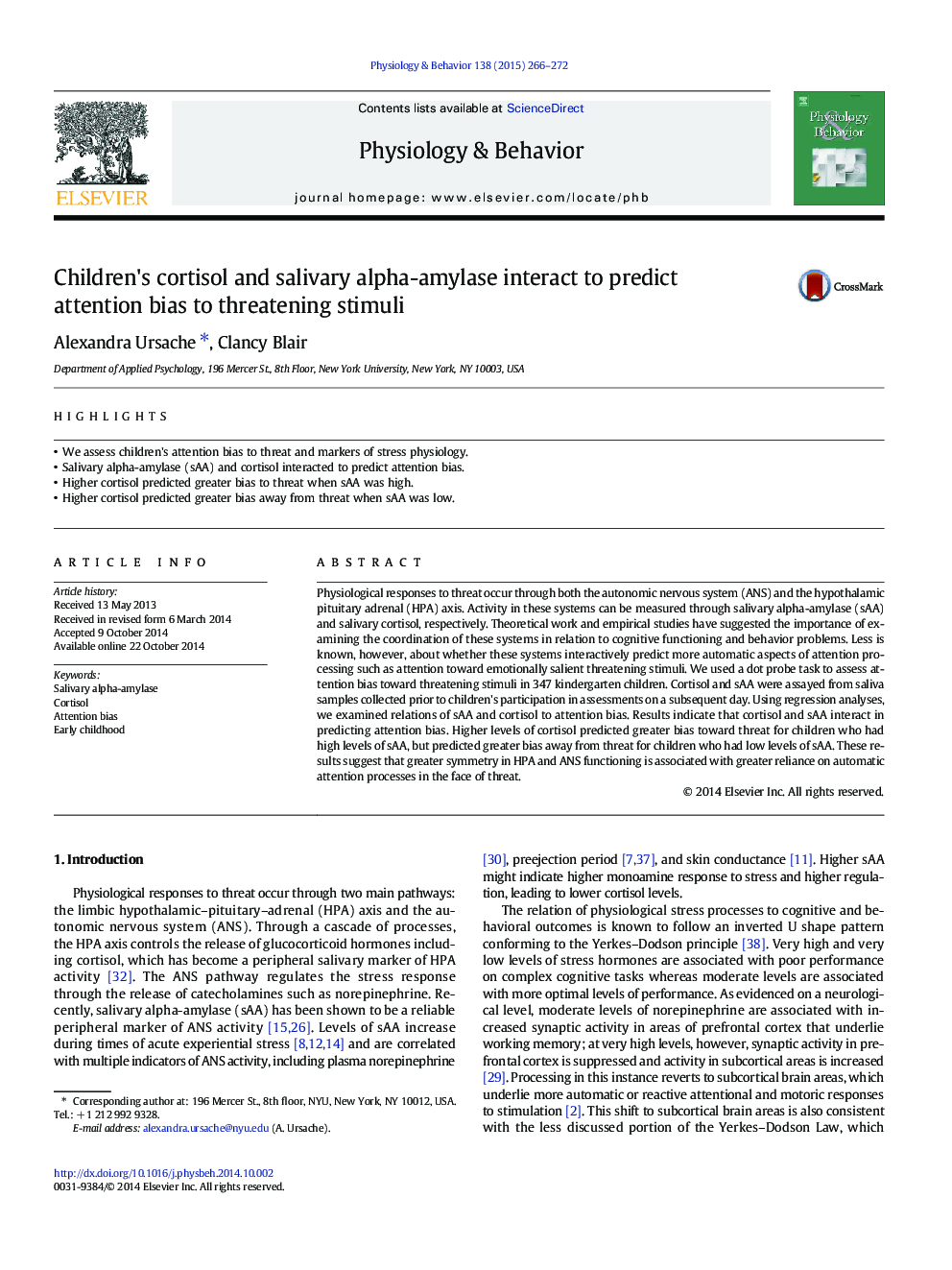| کد مقاله | کد نشریه | سال انتشار | مقاله انگلیسی | نسخه تمام متن |
|---|---|---|---|---|
| 2844221 | 1571179 | 2015 | 7 صفحه PDF | دانلود رایگان |
• We assess children's attention bias to threat and markers of stress physiology.
• Salivary alpha-amylase (sAA) and cortisol interacted to predict attention bias.
• Higher cortisol predicted greater bias to threat when sAA was high.
• Higher cortisol predicted greater bias away from threat when sAA was low.
Physiological responses to threat occur through both the autonomic nervous system (ANS) and the hypothalamic pituitary adrenal (HPA) axis. Activity in these systems can be measured through salivary alpha-amylase (sAA) and salivary cortisol, respectively. Theoretical work and empirical studies have suggested the importance of examining the coordination of these systems in relation to cognitive functioning and behavior problems. Less is known, however, about whether these systems interactively predict more automatic aspects of attention processing such as attention toward emotionally salient threatening stimuli. We used a dot probe task to assess attention bias toward threatening stimuli in 347 kindergarten children. Cortisol and sAA were assayed from saliva samples collected prior to children's participation in assessments on a subsequent day. Using regression analyses, we examined relations of sAA and cortisol to attention bias. Results indicate that cortisol and sAA interact in predicting attention bias. Higher levels of cortisol predicted greater bias toward threat for children who had high levels of sAA, but predicted greater bias away from threat for children who had low levels of sAA. These results suggest that greater symmetry in HPA and ANS functioning is associated with greater reliance on automatic attention processes in the face of threat.
Journal: Physiology & Behavior - Volume 138, January 2015, Pages 266–272
